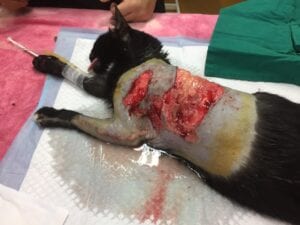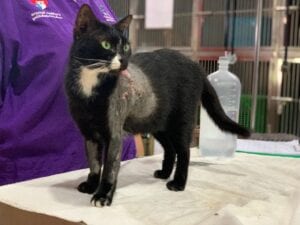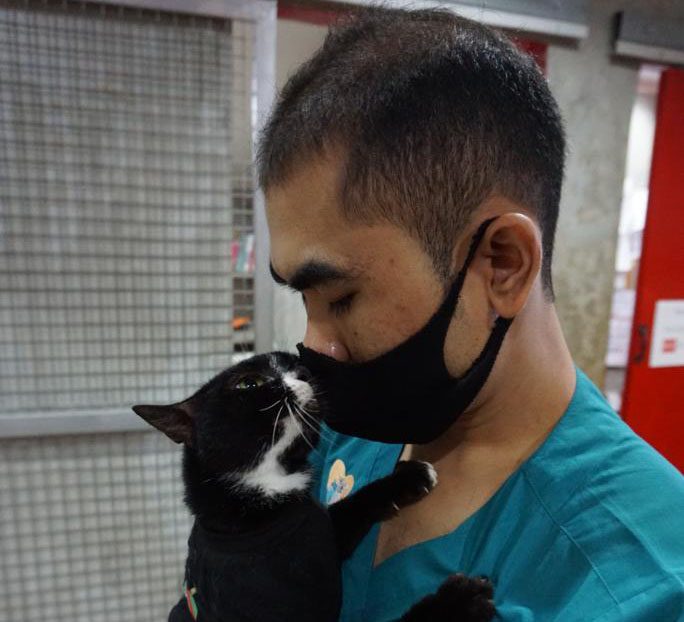What would you do if you were confronted with a cat with a deep burn wound on its back? Well, it’s probably fair to say you wouldn’t send out for fish.
But that’s exactly what LAW’s Clinical Director, Helen Guy, did when little Varagorn was brought to the centre with a very, very nasty injury.


The inspiration came from the treatment on animals that suffered burns during the horrific Australian bushfires earlier this year, with vets Down Under using Tilapia to aid the healing process.
“I had heard about it previously but it’s one of those things you sort of hear about and then it passes you by a little bit, because we hadn’t had a case where we’ve needed to use it,” said Helen. “It was actually Biw, our receptionist, who reminded me of the idea. She looked at the cat and was saying there was more we could do to try to help, and she remembered the fish skin.”
Fortunately, Tilapia is a river fish that can be bought at any local market on Koh Lanta. It’s actually a lot easier to get hold of than many of the medications and treatments our vets need.
 The fish skin is placed on top of the wound, and it should attach because of the collagen and everything else in it. The question then was: what next?
The fish skin is placed on top of the wound, and it should attach because of the collagen and everything else in it. The question then was: what next?
“It’s still a fairly new approach,” Helen added. “I’ve not looked into too many case reports. I just had a quick Google to see how to do it.
“The first day it [the fish skin] had attached, and then on day two or three it had started to lift off, but it looked so much better underneath. Not having much experience of these things, I thought, ‘what do we do? Do we manage it as a wound we could now potentially close’? That’s what we did at that point. We decided to go with closure.
 “The fish skin definitely improved the condition of the underlying layers [of skin], so then we could suture and it was healthy tissue underneath.
“The fish skin definitely improved the condition of the underlying layers [of skin], so then we could suture and it was healthy tissue underneath.
“You could leave the fish skin on and dress around it and it should stay in place, and then I believe it naturally peels off after a while because it dries up. You would still be left with a wound underneath, but it’s a partial thickness.
“But the wound in this case was deeper than I thought when we first removed all the horrible crust and everything. So it was almost like a full thickness burn as opposed to the ones I’ve seen used on humans which were partial thickness burns, so I don’t know if that played a part or not.
 “It significantly enhanced the healing process and it’s something I would definitely look to do again, on cats or dogs. It’s dead easy… and fairly cheap!”
“It significantly enhanced the healing process and it’s something I would definitely look to do again, on cats or dogs. It’s dead easy… and fairly cheap!”
And what of the remainder of the Tilapia?
“The Thai staff made Tom Yam soup with it. It was delicious!”
Could you support the work of our veterinary clinic? Please click here to donate
Want the latest news from Lanta Animal Welfare? Sign up to our newsletter here

